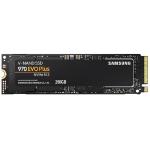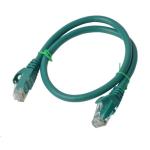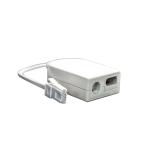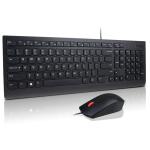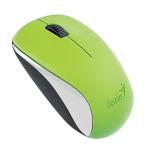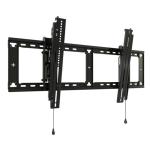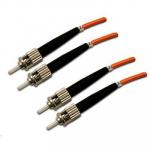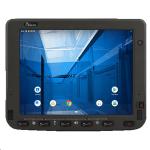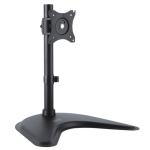Lenovo Intel I350T4 ML2 Quad Port GbE Adapter
Out of stock
- Brand: Lenovo
- MPN: 00D1998
- Part #: NICLEN722896
- UPC:
Features
Specifications
Reviews
Delivery & Pick-up
Returns & Warranty
Popular Network Cards (NIC)
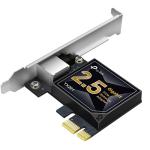
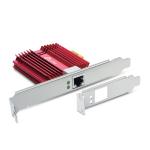

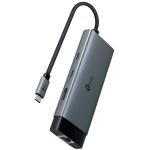

Lenovo Intel I350T4 ML2 Quad Port GbE Adapter
- Brand: Lenovo
- MPN: 00D1998
- Part #: NICLEN722896

Product URL: https://www.pbtech.com/pacific/product/NICLEN722896/Lenovo-Intel-I350T4-ML2-Quad-Port-GbE-Adapter
Features
Intel I350 Gigabit Ethernet Adapters for System x
Intel I350 Gigabit Ethernet adapters from Lenovo build on Intel's history of delivering Ethernet products with flexible design and robust driver support. Available in either 1-port fiber configuration or a 2/4-port copper configuration, these adapters offer excellent price/performance, enhanced power-savings, and market-leading I/O virtualization technologies that includes SRIOV and VMDq. This product guide provides essential presales information to understand the I350 Gigabit Ethernet offerings and their key features, specifications, and compatibility. This guide is intended for technical specialists, sales specialists, sales engineers, IT architects, and other IT professionals who want to learn more about I350 Gigabit Ethernet adapters and consider their use in IT solutions.
Introduction
Based on the Intel I350 Gigabit Ethernet adapters from Lenovo build on Intel's history of delivering Ethernet products with flexible design and robust driver support. Available in either 1-port fiber configuration or a 2/4-port copper configuration, these adapters offer excellent price/performance, enhanced power-savings, and market-leading I/O virtualization technologies that includes SRIOV and VMDq.
Did you know?
Mezzanine LAN-on-Motherboard Generation 2 (ML2) is a new cost-effective adapter form factor for System x servers that offers the flexibility advantages of a PCIe adapter while supporting integrated networking features such as Wake-on-LAN and direct connectivity to the server's IMM2 service processor for out-of-band systems management.
Features and specifications
Adapter features
- Connectors:
I350-T4 ML2, I350-T4 adapters: Four 10/100/1000 copper ports with RJ45 connectors for Cat 5e and Cat6 cabling
I350-T2 adapter: Two 10/100/1000 copper ports with RJ45 connectors for Cat 5e and Cat6 cabling
I350-F1 adapter: One IEEE 802.3Z 1000BASE-SX conforming Fiber Optic LC connector supporing MMF 62.5/50 um
- Based on Intel I350 ASIC
- Line rate with IEEE 802.3 auto negotiation for 1000/100/10 Base-T Ethernet (T4 ML2, T2, and T4 adapters only)
- Host interface: PCIe 2.0 x4 host interface
- Form factor:
I350-T4 ML2 adapter: Mezzanine LOM Generation 2 (ML2) form factor
Other I350 adapters: Standard PCI-e low profile card form factor
- Power dissipation:
I350-T4 ML2 adapter: 12.5 W typical
I350-F1 adapter: 5.1 W typical
I350-T2 adapter: 4.6 W typical
I350-T4 adapter: 5.9 W typical
Performance features
- TCP/UDP, IPv4 checksum offloads, and extended Tx descriptors
- IPv6 support for IP/TCP and IP/UDP receive checksum offloads
- Tx TCP segmentation offload (IPv4 and IPv6)
- Transmit segmentation offload
- Interrupt throttling control
- Message Signal Interrupt (MSI) support
- Message Signal Interrupt Extension (MSI-X) support
- Intelligent interrupt generation
- RSS for Windows
- Scalable I/O for Linux
- Low-latency interrupts
- Header/Packet Data Split in Receive
- PCIe v2.1 TLP processing hint requester
- Descriptor ring management hardware for transmit and receive
Ethernet and power features
- IEEE 802.3, 802.3u, and 802.3ab (Base-T adapters only)
- Jumbo frame support (9500 bytes)
- IEEE 1588 and 802.1AS
- MDI/MDIX auto crossover detection
- IEEE 802.3x compliant flow control
- IEEE 802.3z (I350-F1 adapter only)
- Flow control (IEEE 802.3)
- VLAN support (IEEE 802.1q)
- Priority of service (IEEE 802.1p)
- PXE Preboot eXecution
- iSCSI support for native OS and VMM iSCSI software initiators
- Wake on LAN support (Base-T adapters only)
- IEEE 802.3az Energy Efficient Ethernet
- DMA coalescing
Virtualization features
- SRIOV support
- Intel Virtual Technology (VT) with I/OAT and VMDq
- Eight TX and Rx Queue pairs per port
- Flexible Port Partitioning - 8 virtual functions (VFs) per port
- RX/TX Round-Robin Scheduling
- Traffic isolation
- Traffic steering
- VM to VM packet forwarding
- MAC and VLAN anti-spoofing
- Malicious driver detection
- Storm control
- Per-pool statistics, off loads, and jumbo support
- IEEE 802.1q VLAN support with VLAN tag insertion for up to 4096 VLANs
- Mirroring rules
- VEPA (VM switching)
Intel I/O Acceleration Technology (Intel I/OAT) is a suite of features that improves data acceleration across the platform, from networking devices to the chipset and processors, which helps to improve system performance and application response times. The suite of features includes the following items:
- Intel QuickData Technology: Provides the Direct Memory Access (DMA) engine, which moves data by using the chipset instead of the processor.
- MSI-X: Minimizes the impact of I/O interrupts by load-balancing interrupts across multiple processor cores.
- Low-Latency Interrupts: Allows the adapter to bypass the automatic moderation of time intervals between the interrupts (based on the sensitivity of the incoming data).
- Receive Side Scaling (RSS): Directs the interrupts to a specific processor core based on the application's address.
Virtual Machine Device Queues (VMDq) reduce the I/O impact on the Hypervisor in a virtualized server by performing data sorting and coalescing in the network silicon. VMDq technology uses multiple queues in the network controller. As data packets enter the network adapter, they are sorted, and packets traveling to the same destination (or virtual machine) are grouped in a single queue. The packets are then sent to the Hypervisor, which directs them to their respective virtual machines. Relieving the Hypervisor of packet filtering and sorting improves overall processor usage and throughput levels. Single Root I/O Virtualization (SR-IOV) is a method where the adapter and its resources are virtualized so that virtual machine guest can separately configure and access the virtualized resources without impacting the use of the same resources by other virtual machines.
Specifications
The ML2 adapter has the following physical specifications:
Height: 69 mm (2.7 in.)
Length: 168 mm (6.6 in.)
Width: 17 mm (0.7 in.)
The PCIe low-profile adapters have the following physical specifications:
Height: 69 mm (2.7 in.)
Length: 135 mm (5.3 in.)
Width: 17 mm (0.7 in.)
Shipping dimensions:
Length: 290.3 mm (11.5 in)
Width: 250.8 mm (8.2 in)
Height: 50.8 mm (2.3 in)
Weight: 0.4 kg (0.89 lb)
Temperature
0 to 55 °C (32 to 131 °F) operating
-20 to 65 °C (-4 to 149 °F) storage
Relative humidity
Operating: 5% - 85%, noncondensing



